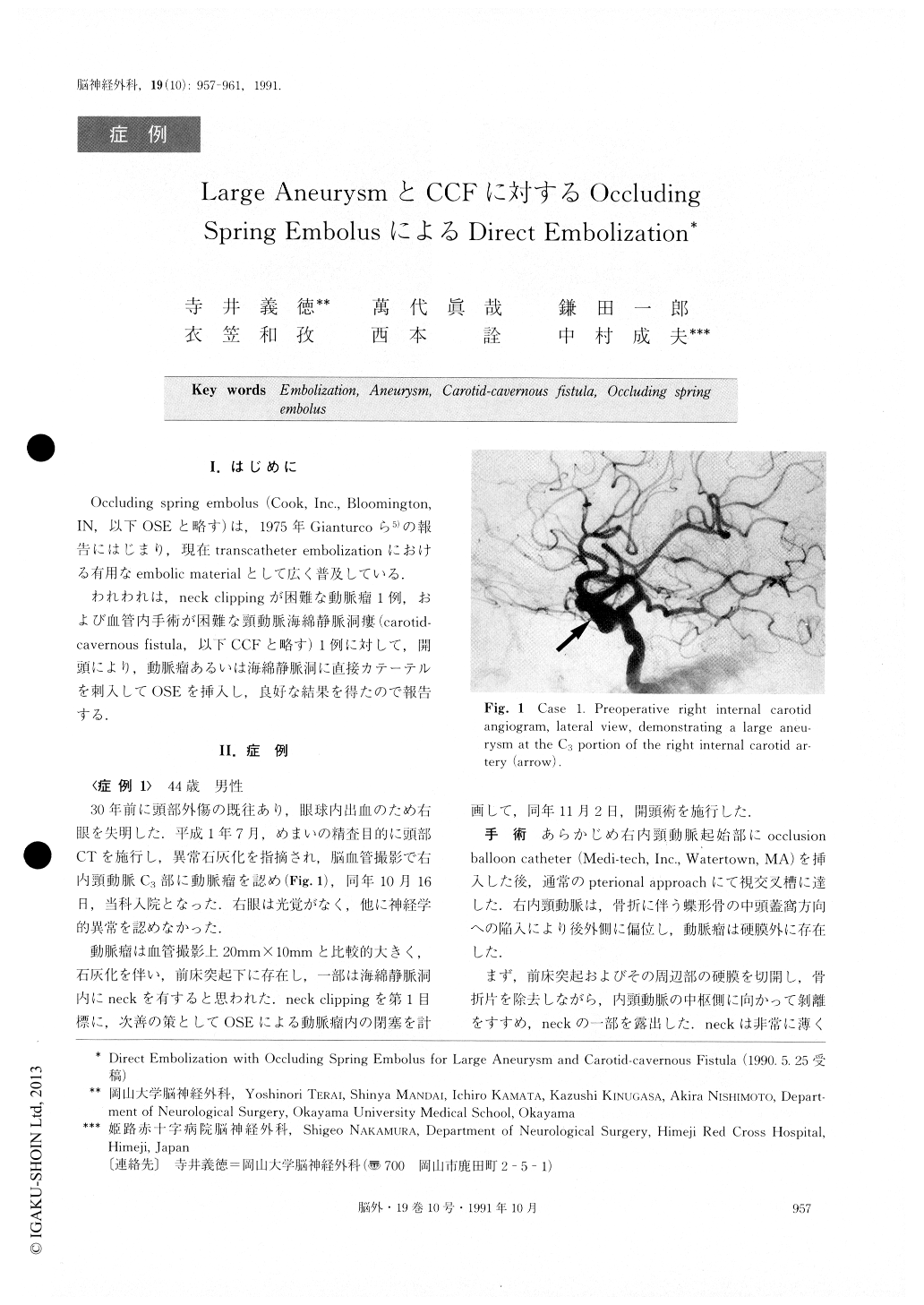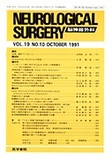Japanese
English
- 有料閲覧
- Abstract 文献概要
- 1ページ目 Look Inside
I.はじめに
Occluding spring embolus(Cook,Inc,Bloomington,IN,以下OSEと略す)は,1975年Gianturcoら5)の報告にはじまり,現在transcatheter embolizationにおける有用なembdic materialとして広く普及している.われわれは,neck clippingが困難な動脈瘤1例,および血管内手術が困難な頸動脈海綿静脈洞瘻(carotid—cavernous fistula,以下CCFと略す)1例に対して,開頭により,動脈瘤あるいは海綿静脈洞に直接カテーテルを刺入してOSEを挿入し,良好な結果を得たので報告する.
Abstract
The authors describe a technique using occluding spring emboli for direct obliteration of an unclippable large aneurysm, and carotid-cavernous fistula (CCF) which failed to be occluded by transarterial and trans-venous approaches.
Case 1 : This 44 year-old man had a histOry of head trauma 30 years ago. He was admitted to our depart-ment on October 16, 1989, because of an aneurysm in-cidentally found by a CT scan taken for the examina-tion of his vertigo. Angiograms revealed a large aneurysm at the C3 portion of the right internal carotid artery.
A right frontal craniotomy was performed on November 2, 1989, but neck clipping of the aneurysm was impossible, because it was a pseudoaneurysm with quite a fragile neck. Subsequently, fourteen occluding spring emboli were inserted into the aneurysm through a polyethylene catheter directly into the aneurysmal dome. Postoperative angiograms showed almost com-plete obliteration of the aneurysm with good preserva-tion of the parent artery.
Case 2: This 26 year-old woman without a history of head trauma was admitted to our department on May 10, 1989, complaining of right conjunctival injection and exophthalmos. Angiograms revealed a spontaneous CCF which had a single orifice at the C4 portion of the right internal carotid artery and drained through the su-perior ophthalmic vein and inferior petrosal sinus. In-itially, transarterial and transvenous approaches were tried, but the attempts were unsuccessful. Subsequently, a right frontotemporal craniotomy was performed on August 8, 1989, and 27 occluding spring emboli were placed into the cavernous sinus through a polyethylene catheter which had been inserted directly. Postopera-tive angiograms showed complete occlusion of the CCF with good preservation of the parent artery. The clinic-al symptoms of the patient gradually improved after the embolization.

Copyright © 1991, Igaku-Shoin Ltd. All rights reserved.


